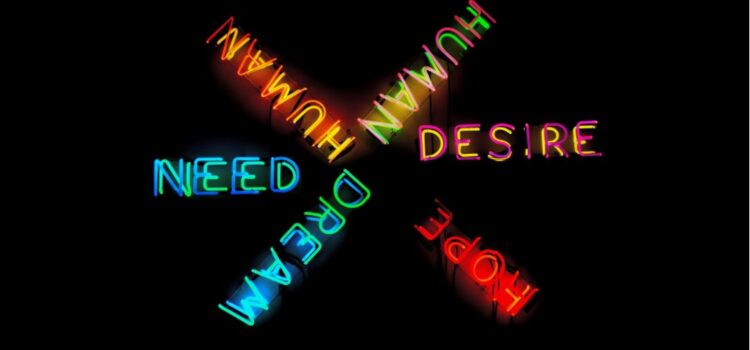

This article is an excerpt from the Shortform book guide to "Existential Kink" by Carolyn Elliott. Shortform has the world's best summaries and analyses of books you should be reading.
Like this article? Sign up for a free trial here.
Do negative patterns and habits have control of your life? How should you manifest your desires?
Some desires are difficult to accept, especially if there’s a stigma around them. But, Carolyn Elliott’s book Existential Kink says that you should consciously enjoy them to regain agency in your life.
Continue reading to learn how to manifest your desires.
Manifesting Desires With Existential Kink
Elliott explains how to manifest your desires by implementing four existential kink practices. This will help you fully incorporate the process and attitude of existential kink into your life so it happens effortlessly, like magic. Though these practices will take conscious effort at first, over time they’ll become second nature so you no longer have to think about them.
#1: Identify Your Fears
One exercise Elliott suggests is to take stock of your deepest fears. Fear is often what stops us from receiving the “positive” patterns we think we want. In fact, Elliott explains, fear and desire always coexist: Everything we desire is something we fear to some degree, and everything we fear is something we desire in some way. For example, you may tell yourself you want to achieve better health, but deep down there’s something about improving your health that you fear, and this fear is why you keep manifesting the opposite. This process is about acknowledging that it’s not because of bad luck or the cruelty of the universe that you don’t have what you want: It’s because you’re afraid of it.
To confront your fears, identify something you think you consciously want but can’t seem to achieve, and then write at the top of a sheet of paper that you hate or refuse to have that thing. Below that, list 20 fears you associate with it. For example, if you want to get your graduate degree, you might write that you refuse to pursue a graduate degree, and list fears such as “I’m afraid I won’t get good grades,” “I’m afraid of the high costs, and I’m unwilling to feel the responsibility of making it worth the money,” or “I’m afraid of what I might discover about myself.” This puts you face-to-face with the internal sensations that are preventing you from achieving what you want.
After listing your fears, include a statement at the bottom asking the universe to remove your fears. Read the whole thing to another person, then tear it up and throw it away. This way you acknowledge the negative emotions associated with this thing you think you want, and then you release them into the universe. The more you do this, the less power your fears will have over you, and the more control you’ll have over your life and self.
#2: Add Some Levity to Your Perspective
Elliott also recommends an exercise to help you take everything in your life (including yourself) less seriously. This is important for existential kink because, for one thing, many of our negative feelings come from an overly serious perception of ourselves. For another thing, the process of existential kink can feel silly, so you have to be able to approach it with a sense of humor and lack of judgment. She suggests that anytime you feel bad as you go about your day, imagine you have a group of cheerleaders rooting for you, dancing and chanting about the “negatives” in your life. This will help you associate those “negatives” with fun and goofiness, taking away their sting and making it easier for you to take pleasure in them.
#3: Deal With Pain and Discomfort With Your Body
Elliott also offers advice for those who suffer from chronic pain or discomfort with their bodies. She explains that at every moment, others are experiencing pain and discomfort just as you are.
This knowledge is not meant to make you feel bad about yourself, but rather to help you take the pain impersonally. Taking pain personally makes you feel like you’ve done something to deserve it as an individual, but understanding that it’s universal helps you realize you’re not uniquely bad, and this in turn helps you fully and joyfully embrace the feeling of pain—since, as with every other sensation, you must be able to embrace pain in order to practice existential kink. She recommends practicing Tonglen meditation to reframe how you think of your pain.
#4: Seek Power Through Compassion
Connecting with others compassionately can also help you come to terms with your unconscious sadistic tendencies. As Elliott explains, some of our “negative” behaviors are driven by sadism, and while this can be a startling and even repulsive notion, understanding and embracing it helps you dissolve those tendencies. She explains that behavior that negatively impacts other people—such as passive aggressiveness, controlling behavior, or frequently inconveniencing others—is a manifestation of the unconscious desire for power.
(Shortform note: Research suggests that the desire for power actually stems from the psychological need for autonomy, which may mean that the behaviors Elliott describes are not motivated by a desire to see others suffer but rather a desire to be independent. Other experts suggest that such behaviors aren’t expressions of a desire for power but of a desire to feel valued. If you find yourself engaging in such behaviors, you might consider whether the desire for independence, the desire for power, or the desire to feel valued is one of your repressed desires as you go about your existential kink practice.)
It’s uncomfortable to acknowledge, but everyone in the world has a desire for power. Some people express this desire through behaviors that cause great harm, such as committing violence against other people. The way to channel this desire productively is to reflect on it, embrace and revel in it, and then identify what feeling you truly want to inflict on others in order to feel powerful and important. Rather than making someone hurt, you might actually want to impress them with your intellect or talent. In fact, Elliott explains, artists in particular are expert at channeling their desire for power into ways to positively impact others, by inflicting aesthetic “pain” via their art.
(Shortform note: To identify the best way to wield your power productively, try to identify your calling. In The War of Art, Steven Pressfield argues that you can do this by noticing what activities make you feel self-doubt or inner conflict, as such feelings indicate these activities are meaningful to you and tap into your inner genius (which means they’re likely to be meaningful to others as well.) Look for pursuits in your life that induce emotions like doubt, love, and fear, and consider how you can use these to influence others, thus satisfying your desire for power in a way that enriches the world.)

———End of Preview———
Like what you just read? Read the rest of the world's best book summary and analysis of Carolyn Elliott's "Existential Kink" at Shortform.
Here's what you'll find in our full Existential Kink summary:
- That the negative patterns in our lives are manifestations of what we desire
- How to dissolve your negative desires so they lose hold over your life
- How to practice existential kink meditation






